Gigabyte Aero 15 (15-X9) review: Unfulfilled potential, but not wasted
Lashings of power and a 4K screen, but can this gaming-office hybrid deliver enough quality?
It can’t make full use of its power, but this laptop still delivers loads of performance inside a relatively slim and light chassis
-
+
Fast Core i9 CPU; Powerful RTX 2070 graphics; 4K screen; A little cheaper than equivalent rivals
-
-
Middling colour accuracy; Uglier than competitors; CPU throttling issues; Middling battery

The Gigabyte Aero 15-X9 is a curious laptop that tries to enhance its normal workstation features with the kind of design that's usually seen in gaming machines.
The end result is a laptop that costs a whopping 2,416 exc VAT - but a machine that tries to take the fight to more conventional work notebooks by deploying a powerful graphics core, a Pantone-certified 4K screen and a high-end Intel Core i9 CPU.
Gigabyte Aero 15 (15-X9) review: Design
You certainly wouldn't anticipate those internals just from the exterior. Gigabyte's Aero design has been around for a couple of years, and it looks smart and understated. Most of the machine is made from matte black aluminium, with an illuminated Gigabyte logo on the lid and the Aero logo inscribed below the screen.
It's certainly not bad-looking, but it is showing its age. There are visible seams around the base and screen, and the like last year's Dell XPS 13, the webcam is installed in the hinge - so the angle results in an unflattering view up your nose if you're having a video conference. Most rivals install their webcams above the screen for good reason, despite ubiquitous slim bezels.
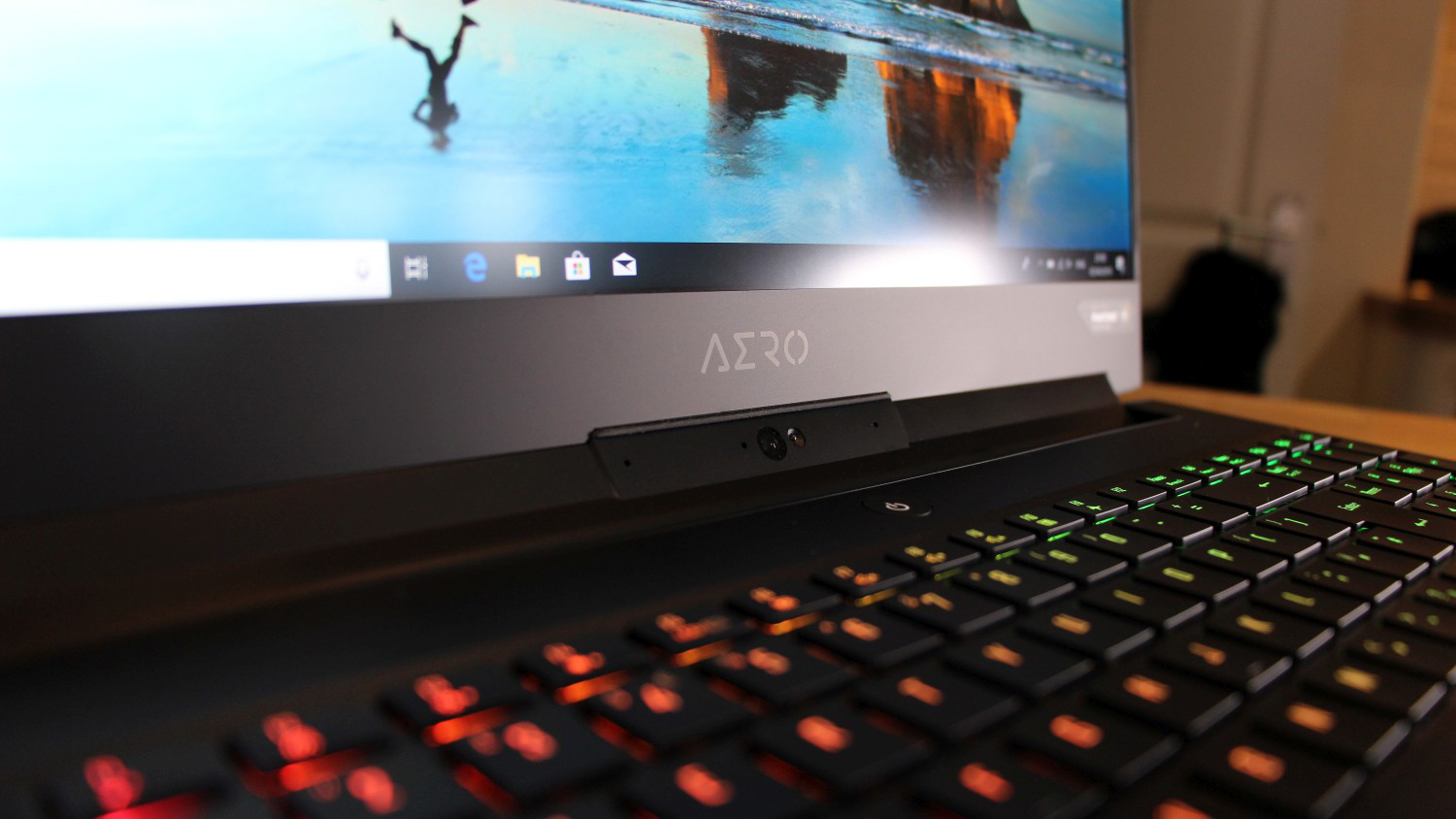
The Dell XPS 15 has a more modern design than the Aero, which mixes bright metal and carbon fibre, while the 15in Apple MacBook Pro has its familiar aluminium body. Neither machine has many visible seams - although the XPS 15 shares its awkwardly-placed webcam.
The Aero loses out when it comes to physical dimensions, too. It weighs 2kg and is 19mm thick, making for a pretty chunky beast. Both rivals are slimmer and narrower, while the Apple machine is lighter too. Moreover, despite the Aero being chunkier than the competition, its build quality isn't as good. There's flex in the metal around the keyboard, and the screen bends back and forth a little too much for our liking.
The Aero isn't weak, but its rivals are sturdier while also proving a little slimmer and lighter. We'd be comfortable slipping the Dell or Apple machines into a backpack without any extra protection - but we can't say the same about the Gigabyte.
The Gigabyte does better when it comes to connectivity. The Aero has a USB 3.1 Type-C port and a faster Thunderbolt 3 connection. You also get three full-size USB 3.1 ports, and one of those uses the faster Gen 2 protocol. Elsewhere, there's Gigabit Ethernet, HDMI, one audio jack and a full-size SD card reader.
Although the Dell XPS 15 has a full-size HDMI port and SD card slot, it's only got one USB-C port and two full-size USB connectors, while the Apple machine has loads of Thunderbolt - but little else.
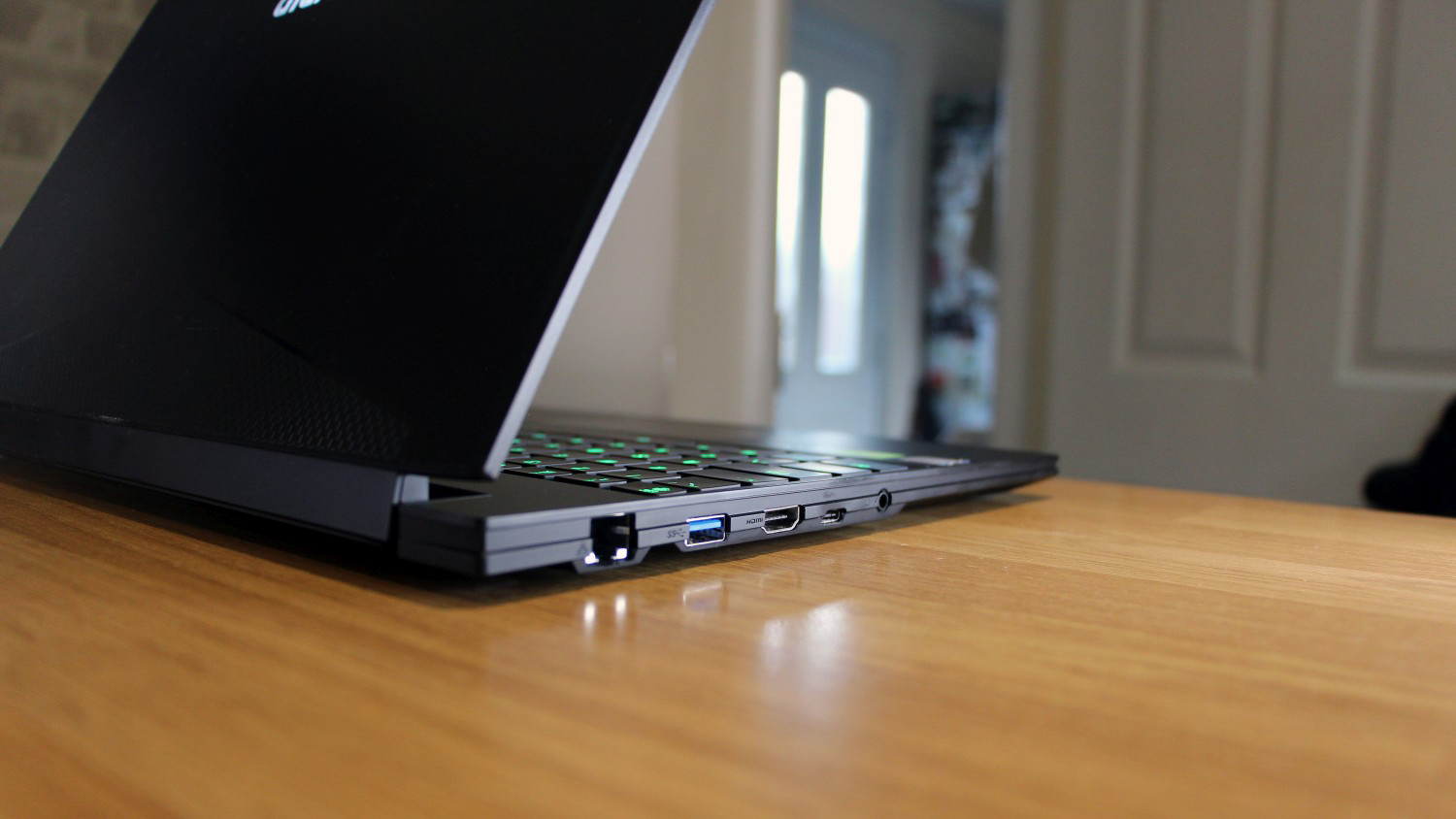
There's versatility underneath, too. It takes a little while to unscrew all the base panel's Torx screws, but once you're inside you can access all of the major components - alongside a spare NVMe connector should you wish to add an extra SSD.
Gigabyte Aero 15 (15-X9) review: Keyboard & Trackpad
The Aero's keyboard stretches across the entire base, and even includes a numberpad. The layout is fine, with full-size space and enter keys, and you get per-key RGB LED backlighting that can be altered or disabled via software. The buttons have ample travel for a machine of this size - alongside a consistent typing action. The base is reasonably solid, and we had no problems hammering through documents.
It's not perfect, however. The buttons aren't particularly tactile: they feel muddy and indistinct when they're pushed down. It means that they don't feel light or clicky, especially when compared to the rapid snap of the buttons on the Dell and MacBook.
The Aero's typing quirks won't slow anyone down, but you'll want to look elsewhere if you want a keyboard that offers a lighter and faster typing experience. The trackpad is fine, though. It has a smooth glass surface that supports multi-touch, and the buttons are good - snappy and shallow enough to get close to a proper desktop mouse.
Gigabyte Aero 15 (15-X9) review: Display
There are two different kinds of screens available across the Aero 15 range. Our 15-X9 has a 4K IPS panel with a 60Hz refresh rate, while a 1080p, 144Hz IPS version is also available. Both are calibrated by Pantone to deliver superior colour accuracy.
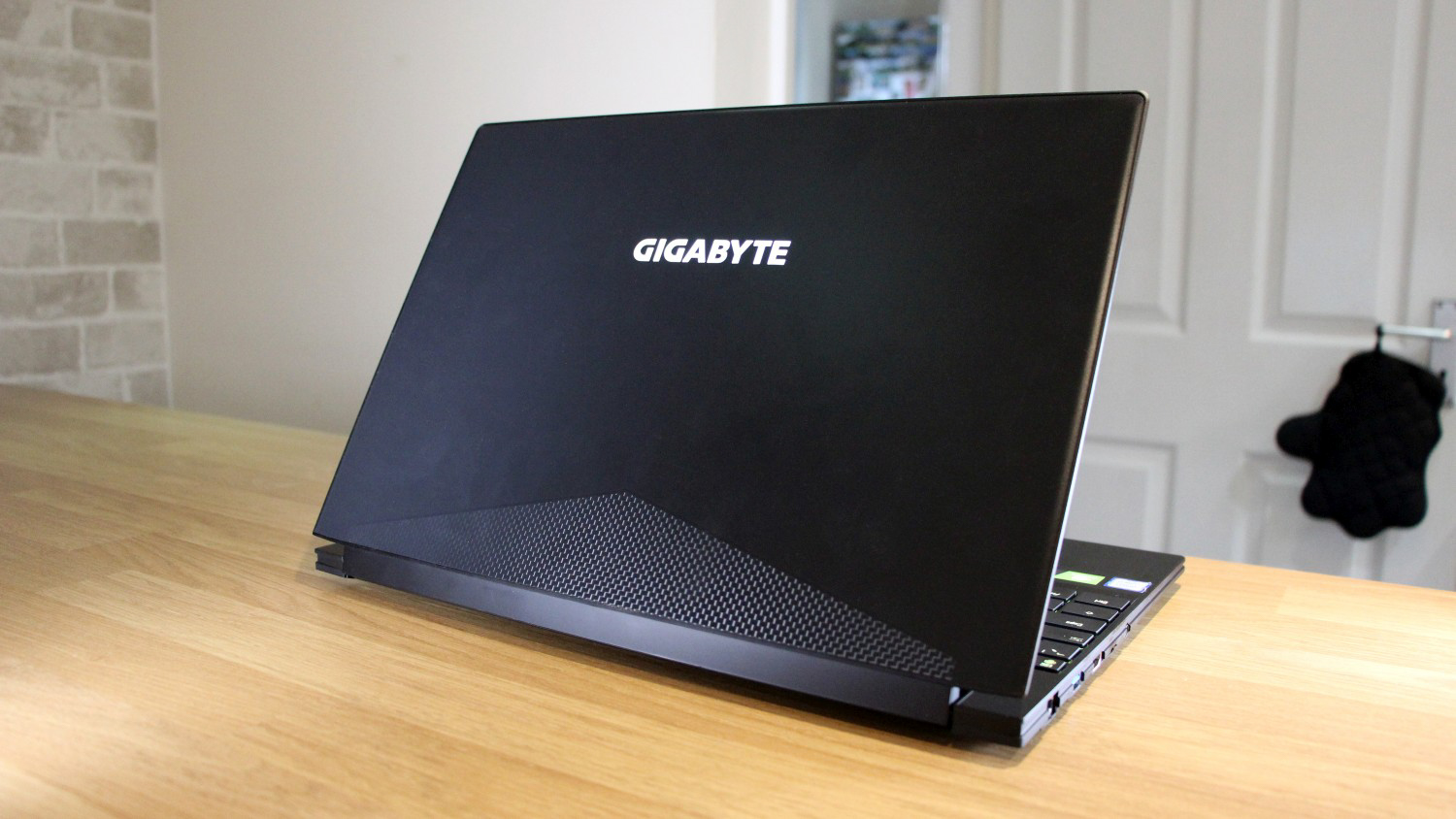
The Full HD, 144Hz version is better if you want some after-hours gaming, or if you work in applications where smooth animation is important. The 4K option, conversely, is better for work where precision or extra screen real estate is more prized.
The Dell XPS 15 is available with Full HD or 4K panels, with the latter calibrated to handle the Adobe RGB colour gamut - a key attribute for design work. The MacBook Pro has a 2,880 x 1,800 IPS screen that can't match quite the Gigabyte or Dell 4K panels for sharpness or screen real estate, despite its overall quality.
It's a solid specification, but the Aero didn't deliver particularly good colours. The colour temperature, for starters, sits at 7,118K - a little too far from the 6,500K target for a laptop that's supposed to be ideal for design. Similarly, the average Delta E of 3.95 is mediocre - not bad, but not as good as it could be. As a result, colours look a little tepid.
Those results also mean that the screen's colours aren't quite comparable with how colours will look in print, or on displays with better calibration. It's a shame that the colours are a little chilly and underwhelming, because the screen can display nearly 100% of the sRGB and Adobe colour gamuts.
That won't influence many kinds of work tasks, where resolution and contrast are more important - but it does mean that the Gigabyte's screen is not suitable for situations where colours are key, like design work or professional photo editing.
The colour situation is a shame, because contrast and uniformity are both better. The Aero's peak brightness level of 380cd/m2 is excellent - good enough that the screen doesn't lose any clarity beneath bright office lights. The black measurement of 0.23cd/m2 is just as good, and those figures deliver a contrast ratio of 1,652:1.
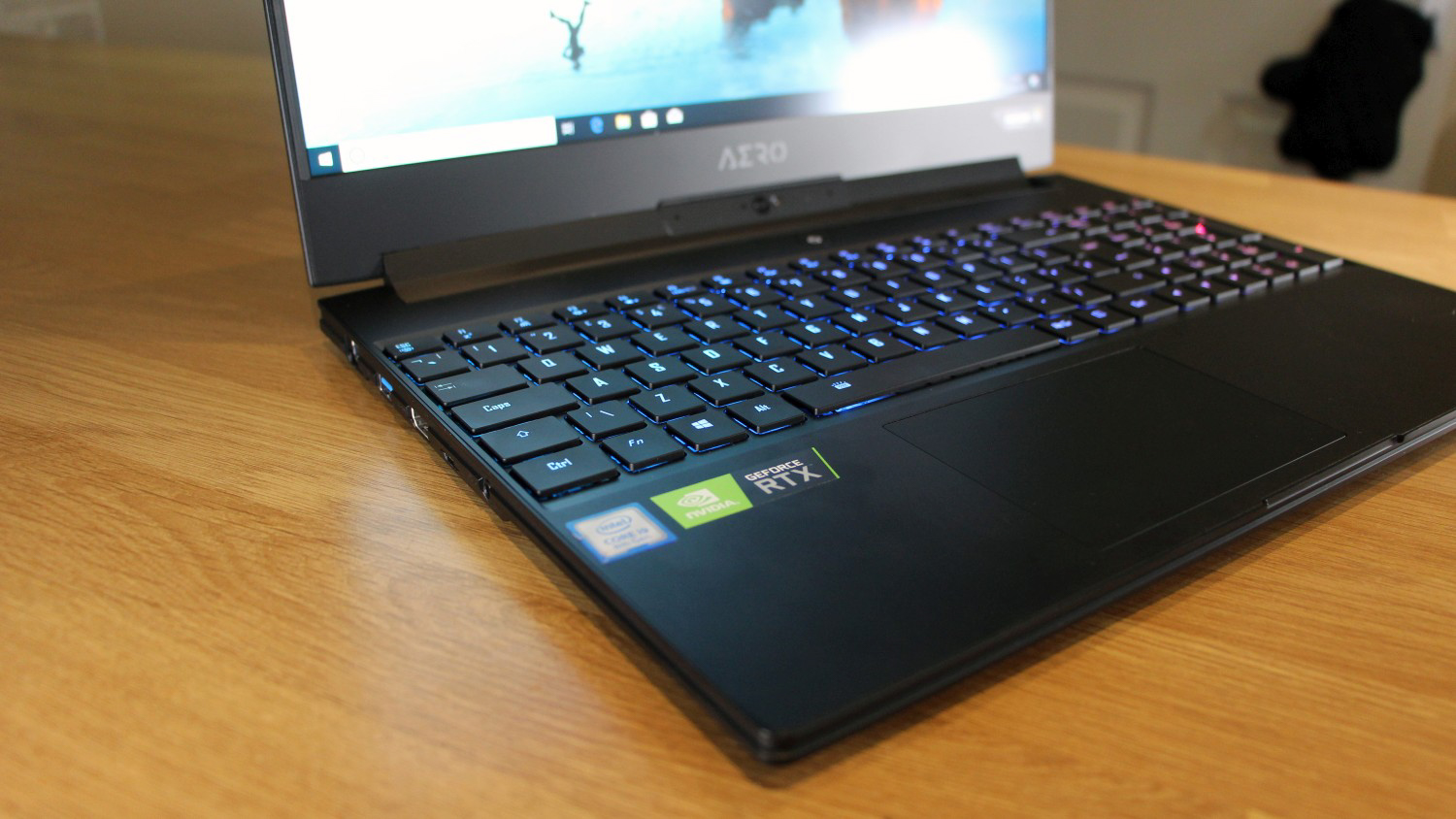
That's great, and it ensures that the Aero's panel has loads of depth and punch, with dark areas rendered with loads of depth and bright colours handled with vibrancy and punch. Uniformity is excellent too. The screen's backlight strength only deviates by 4% at its worst point, and it's better in most areas of the screen.
The Gigabyte's screen has a 4K resolution, great coverage and impressive contrast, making it effective for plenty of different work situations. However, its colours are a little chilly, and not as accurate as they could be. That's disappointing for a Pantone panel, and it means that the Gigabyte is not suitable for work where extreme colour accuracy is required - like in certain design or photography situations. If you do need more colour accuracy, the Dell XPS 15 is better.
Gigabyte Aero 15 (15-X9) review: Hardware & Performance
Under the Aero's hood you'll find a 32GB of DDR4 RAM and a Core i9-8950HK, which is one of the most powerful mobile CPUs that Intel builds.
It's got six cores, a base speed of 2.9GHz, and can reach 4.3GHz across all cores and 4.8GHz on one and two cores. It's also overclockable and has 12MB of L3 cache, and in this machine its performance is dynamically managed by Gigabyte's software, which claims to ramp up the Aero's abilities in tasks where extra grunt is required.
The Core i9 was also included in the latest Apple MacBook Pro 15, and it's better than the Core i7-8750H that's usually in high-end laptops. That chip also has six cores, but it has weaker base and boost clocks of 2.2GHz and 4.1GHz as well as a smaller cache. The Gigabyte is available with Core i9 and Core i7 CPUs - and the Dell and Apple machines can also be configured with both chips.
The Core i9 CPU zipped through our benchmarks to deliver an overall result of 206. That's significantly quicker than the MacBook Pro, which used the same Core i9 CPU, 32GB of RAM and a weaker GPU to score 173.
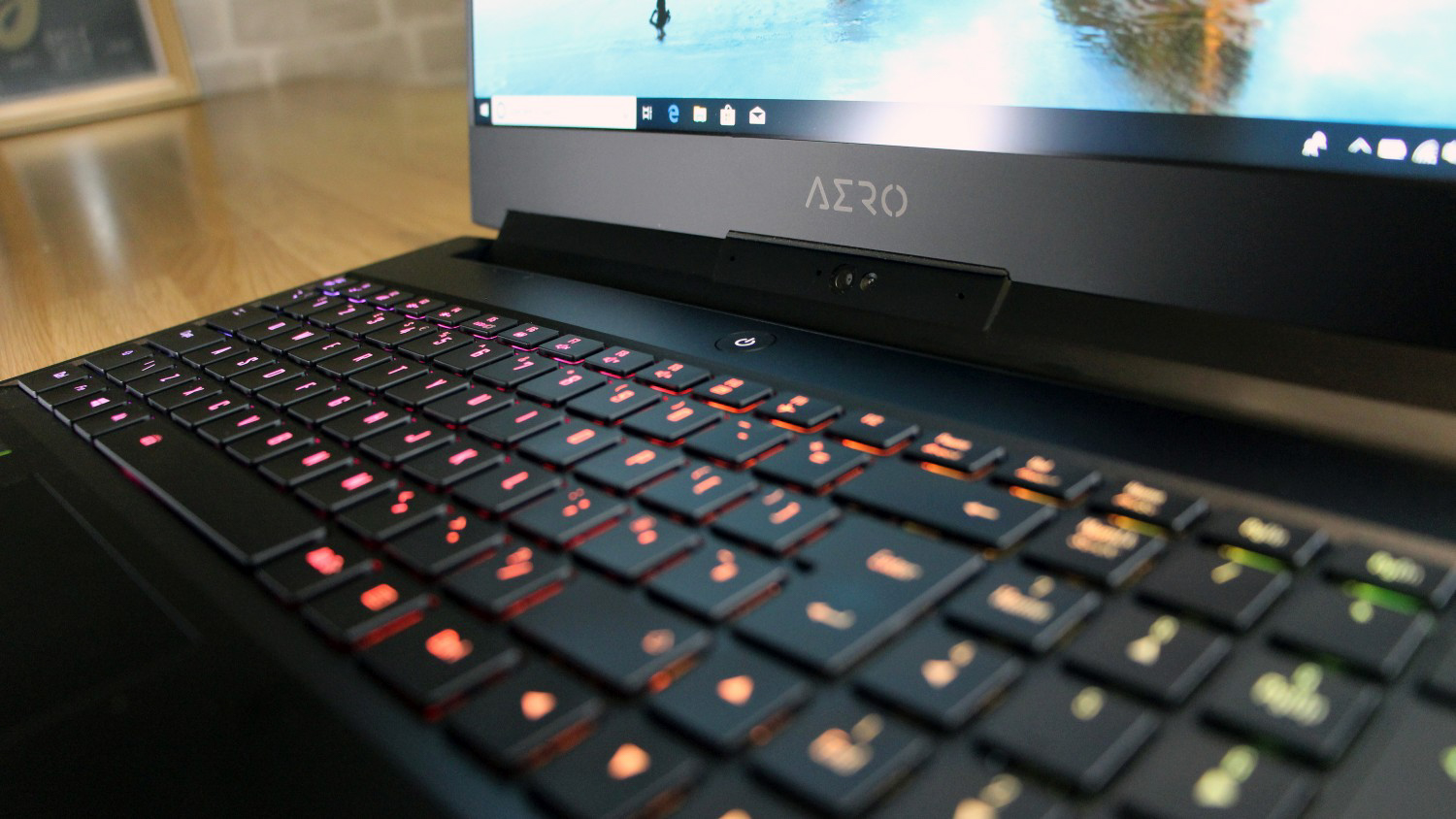
Machines with the more conventional i7-8750H often score around 170 in benchmarks, so you're getting a significant boost over the familiar Core i7 silicon too. It's a good bill of health that'll see the Core i9 chip handle almost anything, from video and photo applications to CAD tools and huge databases.
However, more testing reveals that this chip isn't as quick as it could be. When the CPU was tasked with single-core workloads, it peaked at around 4GHz - and when it was handling multi-core tasks in ran between 3.8GHz and 4GHz. In a CPU stress-test, with all cores at 100% load, the chip peaked at 3.5GHz. With the CPU and GPU stressed at 100%, the CPU hovered between 3.2GHz and 3.4GHz.
Those speeds are a long way short of what the Core i9 can theoretically achieve, and they mean that you're not getting maximum performance. The throttling does make some sense, though - with the CPU stress-tested the chip peaked at 73C, and with the entire rig stressed the CPU topped out at 90C. The chassis clearly wouldn't be able to cope if the CPU were left unfettered.
The Gigabyte produced modest fan noise during a CPU stress-test, but was louder with the whole system stress-tested. The noise is noticeable, and it's louder than the Dell and Apple machines - but it's not the worst we've heard. It can be drowned out by using a headset or just by working in a busy office, and we're also pleased that the exterior never became too warm.
The Core i9 CPU is paired with RTX 2070 graphics. It's one of Nvidia's more powerful mobile chipsets - although Gigabyte has relied on the Max-Q version, which means reduced clock speeds to improve efficiency at the expense of performance.
Nevertheless, the Aero easily beats the competition. The Dell only wields the older, slower GTX 1050 Ti, while Apple lags behind with underwhelming AMD Radeon GPUs. The Gigabyte's GPU delivered a score of 121.07fps in Cinebench's OpenGL benchmark, which replicates graphics-intensive workloads. That's about 20fps ahead of the GTX 1050 Ti.
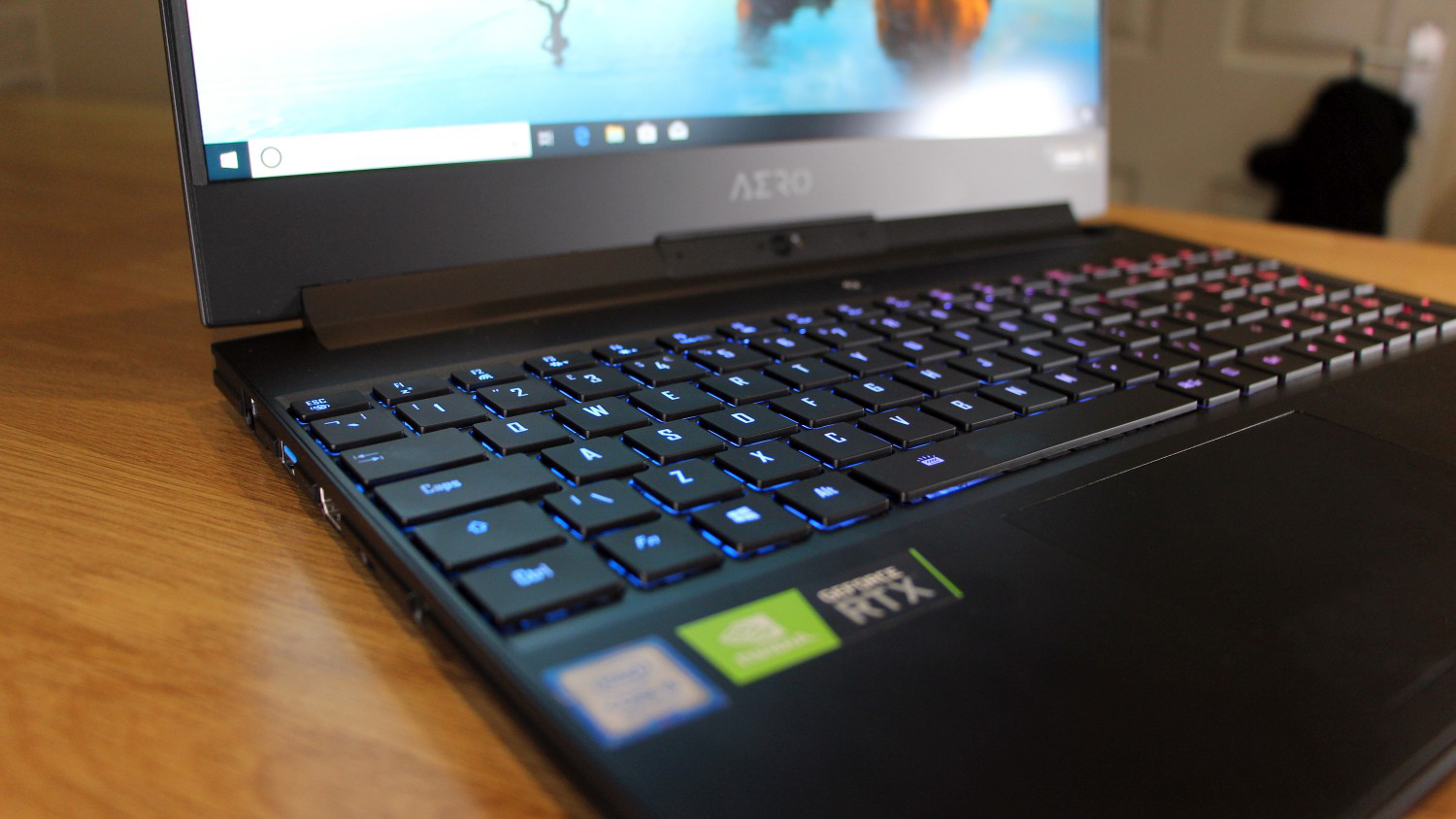
You get extra graphics power with this machine, and you also get additional features, like Nvidia Ray-Tracing and DLSS. They have limited usefulness now, but it's worth having if they become a big deal in future graphic design applications.
The rest of the Gigabyte's specification is impressive. There's a 1TB Intel 760p SSD as well as Killer-branded Ethernet and dual-band 802.11ac wireless. The extra memory and large SSD are beneficial for work and play, although those networking chips will only come to the fore in games.
The Gigabyte's 2,416 exc VAT price compares well to rivals with similar hardware, too. To get an equivalent Dell XPS 15, with the Core i9 CPU and 32GB of memory, you'll have to spend 2,666 exc VAT - and that only gets you the GTX 1050 Ti GPU, which is the only graphics option available for that machine. If you want an equivalent MacBook Pro 15, it'll cost you a mighty 2,999 exc VAT, and that's with a weaker AMD graphics chip.
Gigabyte has kitted the Aero out with a 94Wh battery that offers surprising longevity for a machine with gaming DNA. In our tests, the battery life came in at 6hrs 35mins - a little behind the MacBook Pro, and a couple of hours behind the latest Dell machines.
You'll be able to nurse the Gigabyte through a day's work away from the mains if you use low-intensity applications and keep the screen brightness down, but only just. Also remember that tougher work will slash the battery life - expect four hours (or less) if you run applications that hammer the CPU and GPU.
Gigabyte Aero 15 (15-X9) review: Different Models
Alternative specifications are available if the Core i9 CPU is overkill - or if you want more GPU power. The Aero 15-Y9 has an RTX 2080 that delivers extra graphics power, and it comes with the 1080p screen variant the Core i7-8750H CPU. It costs 2,642 exc VAT.
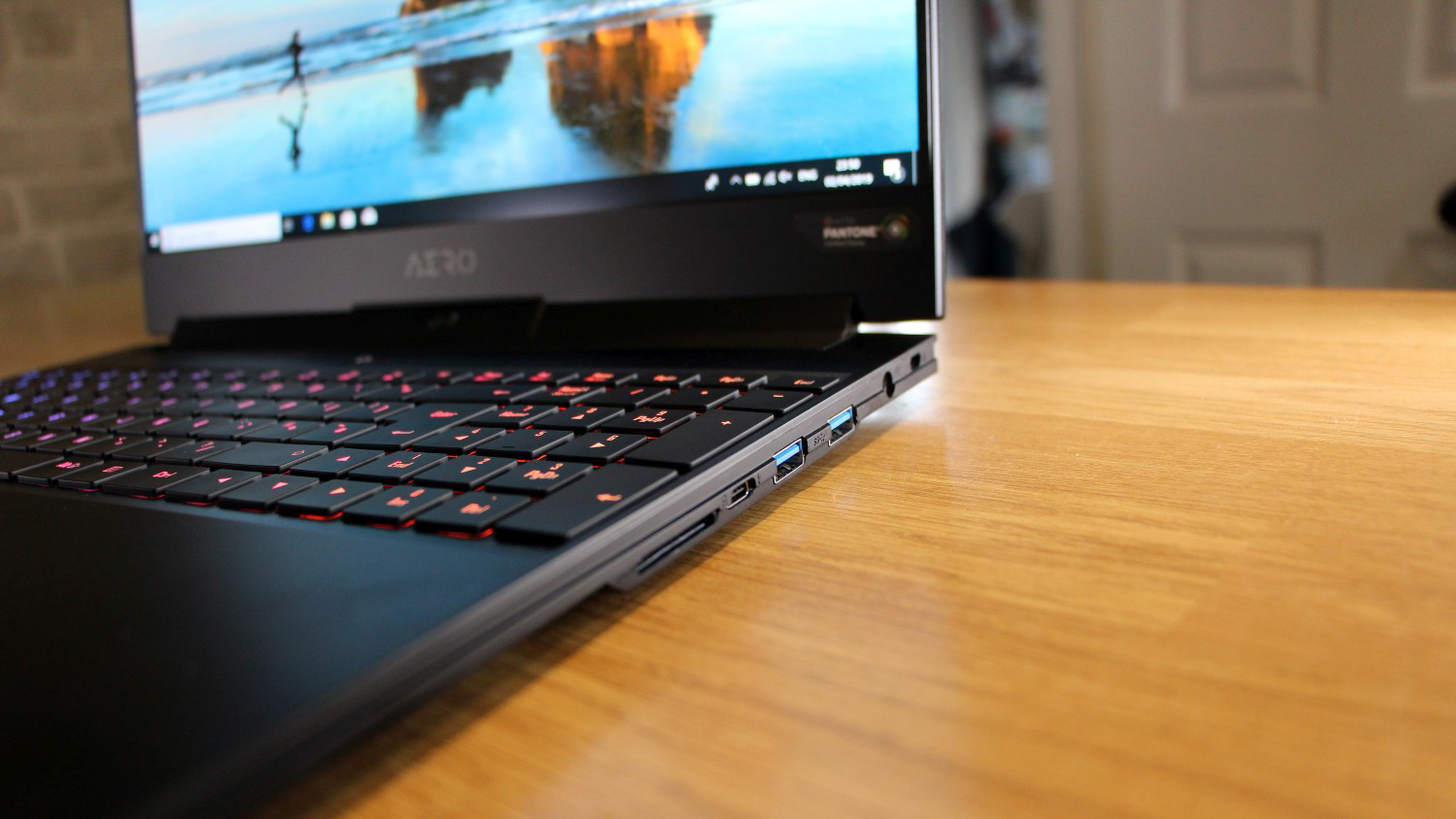
A version of the 15-X9 is also available with the weaker Core i7 CPU, 16GB of DDR4 and the 144Hz Full HD screen alongside this review's RTX 2070 graphics core, costing 1,917 exc VAT.
The cheaper Aero 15-W9 has the Core i7 CPU and the 1080p screen, and it cuts back elsewhere with 16GB of memory and an RTX 2060 graphics core. That costs a more affordable 1,559 exc VAT, and that graphics core will still outpace the older, weaker graphics hardware inside the Dell and Apple machines.
Gigabyte Aero 15 (15-X9) review: Verdict
The Gigabyte Aero 15-X9 doesn't have as much style or finesse as its rivals, but it does deliver more power and with better value.
That approach does have its own pros and cons. The Core i9 CPU delivers a huge amount of processing power despite its throttling, and the RTX 2070 serves up more graphical grunt even though its clocks are cut back. Together, when combined with 32GB of DDR4, they create a specification that can handle a wider variety of work tasks than either rival.
The Gigabyte's thermal performance isn't awful - especially for a machine with gaming DNA - and it's still reasonably slim and light.
However, the screen doesn't live up to its billing, instead offering a high resolution and great contrast but with colours that should be better. The keyboard is divisive, and battery life is good - but some rivals last longer.
You won't get more CPU power in a laptop at this size, though, and Gigabyte's machine offers it with more GPU power and a lower price than the competition. The Aero 15-X9 isn't a flawless mobile workstation, but it's a good option if you need more power than other machines at this size can deliver.
Verdict
It can’t make full use of its power, but this laptop still delivers loads of performance inside a relatively slim and light chassis
Processor: 2.9GHzGHz Intel Core i9-8950HK
RAM: 32GB DDR4
Graphics: Nvidia GeForce RTX 2070 Max-Q 8GB
Storage: 1TB Intel 760p M.2 SSD
Display: 15.6in 3,840 x 2,160 IPS
Operating system: Windows 10 Home 64-bit
Optical: N/A
Connectivity: Dual-band 802.11ac, Gigabit Ethernet, Bluetooth 4.0
Ports: 3 x USB 3.1, 1 x USB 3.1 Type-C, 1 x Thunderbolt 3, 1 x audio, 1 x SD card, 1 x HDMI 2.0
Dimensions: 356 x 250 x 19mm
Weight: 2kg
Warranty: 2yr
Get the ITPro daily newsletter
Sign up today and you will receive a free copy of our Future Focus 2025 report - the leading guidance on AI, cybersecurity and other IT challenges as per 700+ senior executives
Mike Jennings has worked as a technology journalist for more than a decade and has been fascinated by computers since childhood, when he spent far too long building terrible websites. He loves desktop PCs, components, laptops and anything to do with the latest hardware.
Mike worked as a staff writer at PC Pro magazine in London for seven years, and during that time wrote for a variety of other tech titles, including Custom PC, Micro Mart and Computer Shopper. Since 2013, he’s been a freelance tech writer, and writes regularly for titles like Wired, TechRadar, Stuff, TechSpot, IT Pro, TrustedReviews and TechAdvisor. He still loves tech and covers everything from the latest business hardware and software to high-end gaming gear, and you’ll find him on plenty of sites writing reviews, features and guides on a vast range of topics.
You can email Mike at mike@mike-jennings.net, or find him on Twitter at @mikejjennings
-
 ‘Phishing kits are a force multiplier': Cheap cyber crime kits can be bought on the dark web for less than $25 – and experts warn it’s lowering the barrier of entry for amateur hackers
‘Phishing kits are a force multiplier': Cheap cyber crime kits can be bought on the dark web for less than $25 – and experts warn it’s lowering the barrier of entry for amateur hackersNews Research from NordVPN shows phishing kits are now widely available on the dark web and via messaging apps like Telegram, and are often selling for less than $25.
By Emma Woollacott Published
-
 Redis unveils new tools for developers working on AI applications
Redis unveils new tools for developers working on AI applicationsNews Redis has announced new tools aimed at making it easier for AI developers to build applications and optimize large language model (LLM) outputs.
By Ross Kelly Published
-
 Google layoffs continue with "hundreds" cut from Chrome, Android, and Pixel teams
Google layoffs continue with "hundreds" cut from Chrome, Android, and Pixel teamsNews The tech giant's efficiency drive enters a third year with devices teams the latest target
By Bobby Hellard Published